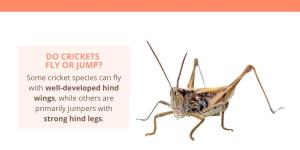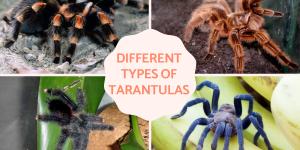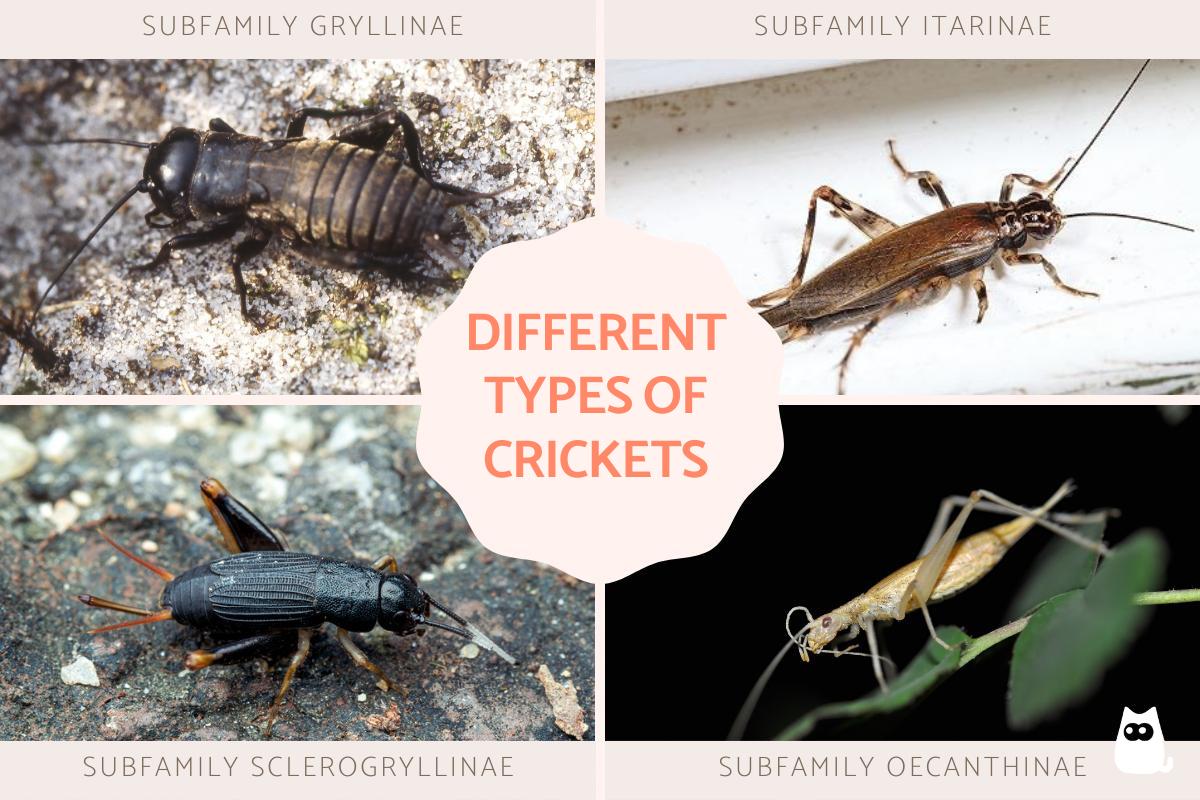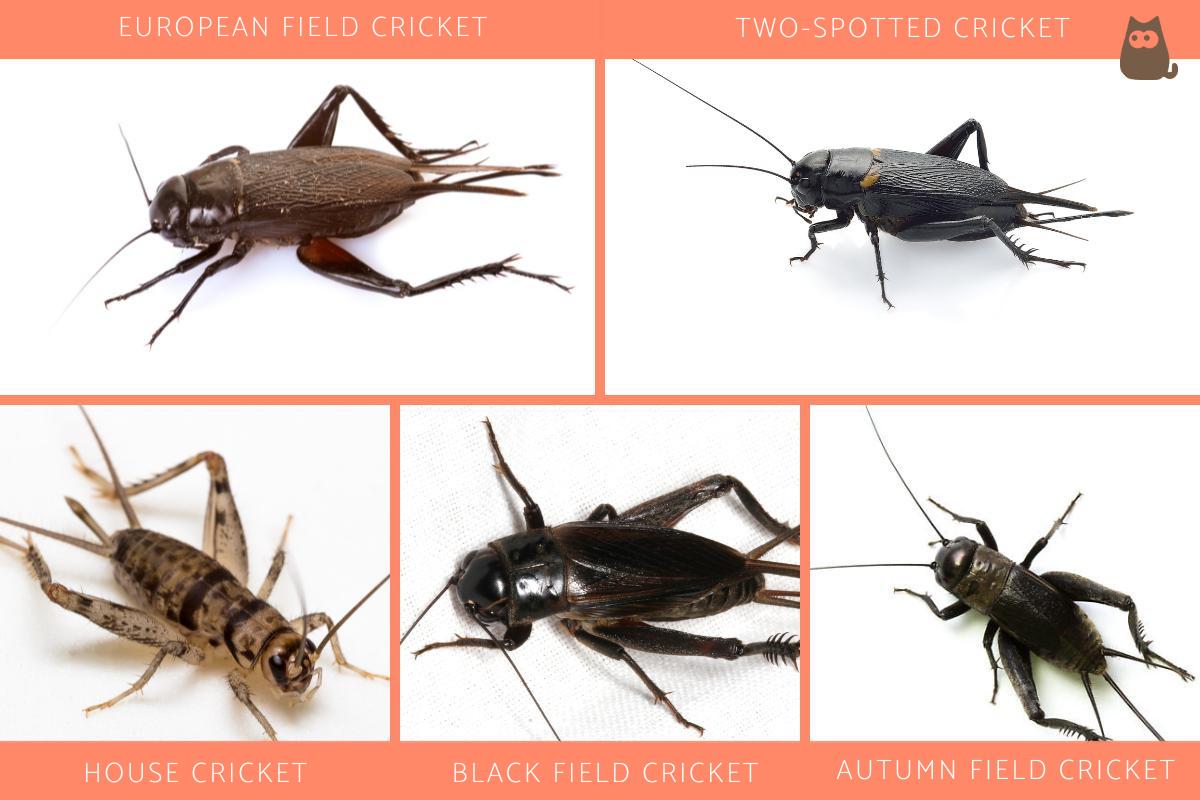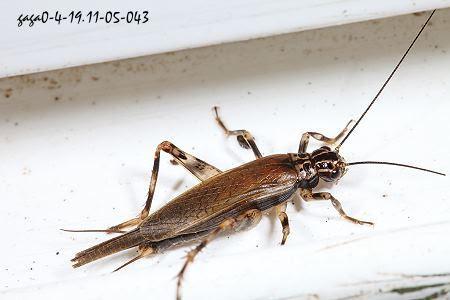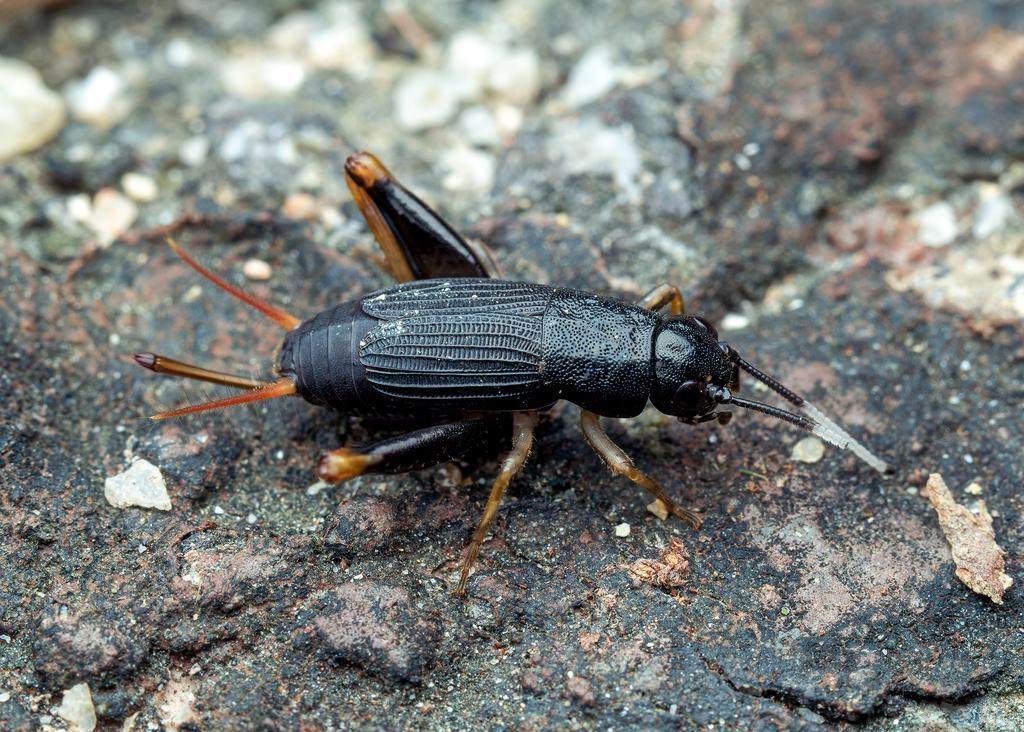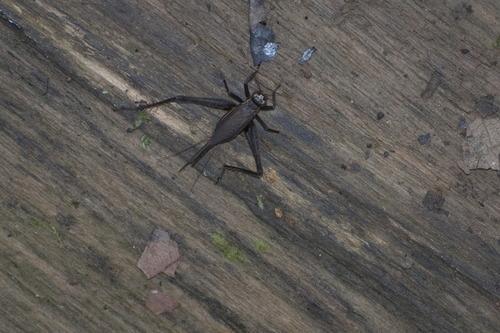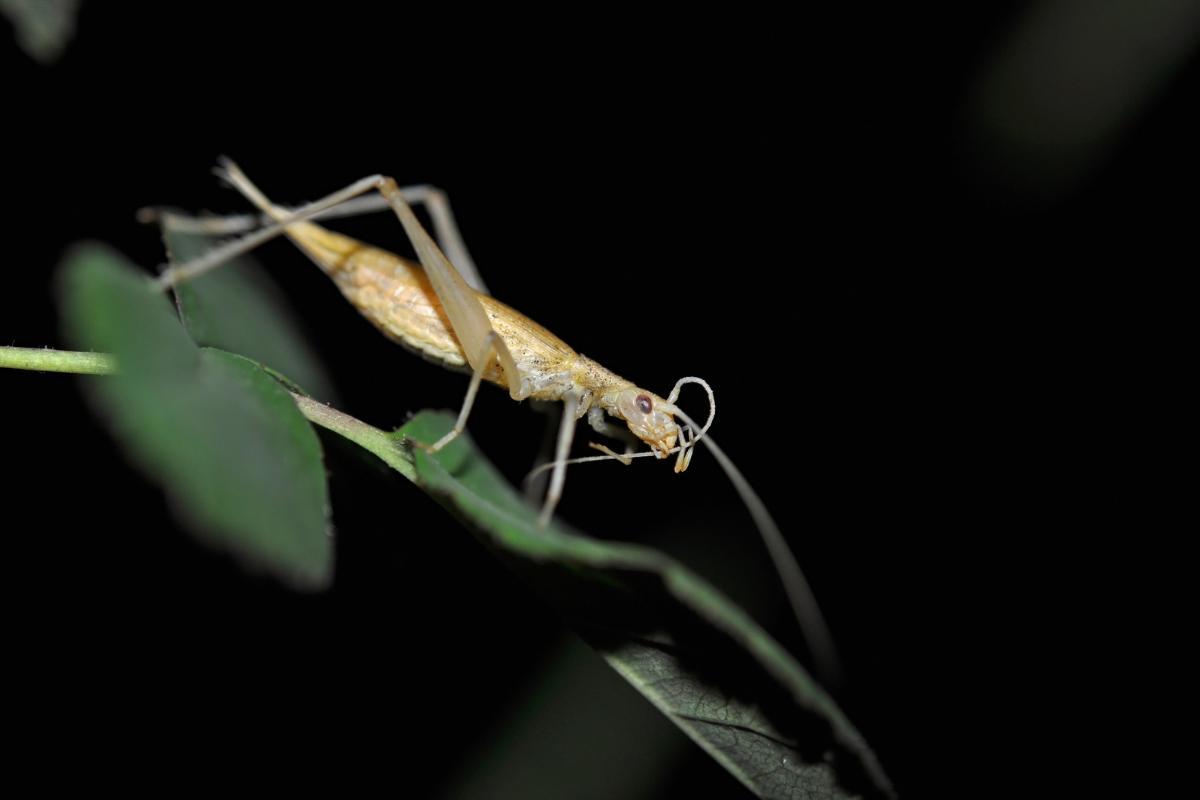Different Types of Crickets


Crickets are a type of insect within the order Orthoptera, a taxonomic group which also contains locusts, grasshoppers and wetas. Entomologists have differed over the classifications of these insects of the years. While it may be subject to change, crickets are currently grouped in the superfamily known as Grylloidea. There may be some insects outside this order which have ‘cricket’ in their common name, but they will not be considered true crickets. With an almost global distribution, crickets have various types of habitat. They can be arboreal, subterranean or even live inside our homes. Such interaction with humans can be problematic, especially since some are known to consume crops grown in agriculture.
At AnimalWised, we learn more about these characteristics and behaviors by looking at the different types of crickets. We name exemplar cricket species types, provide photos of what they look like and share some defining traits.
Field crickets (subfamily Gryllinae)
This group contains a varied number of cricket genera, each genus containing various individual species. Generally speaking, they measure between 15 to 25 mm. Their coloration depends on the type of cricket, but they usually range between shades of black, red and brown. They display a certain amount of sexual dimorphism with females have an elongated ovipositor structure, in addition to not being able to produce the characteristic sound that males can make.
Field cricket diets can be varied, often consuming plants and their seeds, but also feeding on other insects. These other insects can be alive or dead and they are also known to consume their eggs. Some also display kelptoparasitic behavior by stealing food from other animals such as spiders.
Some examples of this type of crickets are:
- European field cricket (Gryllus campestris)
- Two-spotted cricket (Gryllus bimaculatus)
- House cricket (Acheta domesticus)
- Tropical house cricket (Gryllodes sigillatus)
- Black field cricket (Teleogryllus commodus)
- Autumn field cricket (Gryllus pennsylvanicus)
Species of field cricket that have other insect species in their diet are considered insectivores. Learn more with our article detailing the types of animals that eat insects.
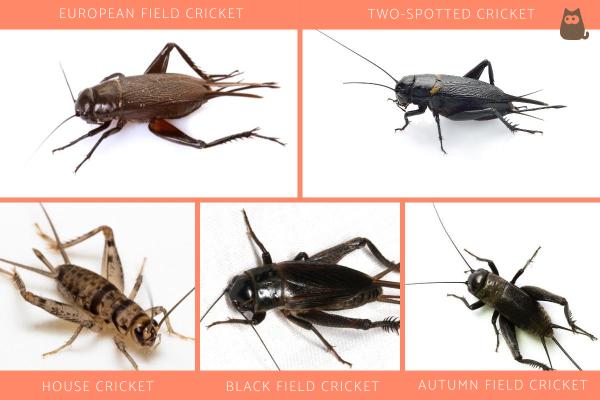
Ground crickets (subfamily Itarinae)
These types of crickets are native to Asia, found in countries such as China, India and Borneo, among others. They are characterized by having a small head and prothorax on a fusiform body, meaning it is tapered at either end. They have a bright anterior coloration, relatively large eyes, thin antennae, short but robust front legs, wide front wings and elongated hind wings.
Although studies on a more specific characterization of its members are lacking, some examples of types of ground crickets are:
- Itara sabahensis
- Itara indiae
- Itara maxima
- Parapentacentrus brevipennis
- Parapentacentrus formosanus
As you can see, the research is such that these types of crickets do not even have recognized common names. In the photo below you can see the cricket species we see the last mentioned species Parapentacentrus formosanus.

Bark crickets (subfamily Landrevinae)
Among the different types of true crickets, we find this subfamily commonly known as bark crickets. They have an omnivorous diet and are terrestrial in habits, meaning they spend most of their time on the ground.
Depending on the bark cricket species, they are distributed throughout Central and South America, Africa, tropical Asia, Korea, Japan and Australia, as well as on Pacific islands. Some of examples of bark cricket species are:
- Copholandrevus australicus
- Duolandrevus gigans
- Duolandrevus minimus
- Kotama maai
- Otteana dilinhensis
- Repapa sapagaya
Stiff-winged crickets (subfamily Sclerogryllinae)
Stiff-winged crickets are a group of only a few cricket species that have been identified in tropical Asia, Africa, Japan and Korea. There is not much more information about the description of the group, but they can be distinguished by the presence of spurs on their hind tibias. You can see these spurs in the photo below.
Within the types of crickets known as stiff-winged crickets, we can find only two genera. They are Sclerogryllus and Rhabdotogryllus. The type species is Sclerogryllus coriaceus.
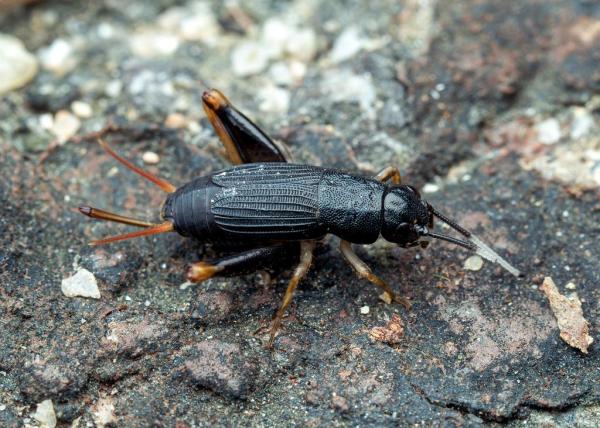
Bush crickets (subfamily Eneopterinae)
Among the types of large crickets we find the subfamily Eneopterinae, which groups around 500 individual cricket species. They are mainly distributed in humid tropical regions. The coloration of their bodies is mainly brown or gray. The stridulatory organ of males can be varied in form, as can the sounds they emit and their behavior. The diet of bush crickets consists mainly of leaves, fruits and flowers, with some species known to cause sever crop damage.
The following are some examples of these types of crickets:
- Xenogryllus eneopteroides
- Hemigryllus amazonicus
- Cardiodactylus minuta
- Cardiodactylus nigris
- Eurepella mjobergi
In the image we see in the photo below is the species Cardiodactylus nigris.

Tree crickets (subfamily Oecanthinae)
These types of crickets are distributed worldwide, with the exception of Antarctica. They have the two characteristic front wings near the head which are leathery and hardened. The hind wings have a membranous texture and are used for elevation during flight.
When these insects are not flying, the front wings fold up and cover the hind wings. The body is thin and elongated, a usually with greenish color. Such coloration helps them camouflage themselves in various types of vegetation. Their legs are long and strong, allowing them to make great leaps. With their thin antennae they both perceive odors and use them for tactile maneuvering.
You can learn about the differences between camouflage and mimicry in our related article.
Let's get to know some of the species that are included in this group of crickets:
- Italian tree cricket (Oecanthus pellucens)
- Silent tree cricket (Tafalisca lurida)
- O'ahu deceptor bush cricket (Leptogryllus deceptor)
- Two-spotted tree cricket (Neoxabea bipunctata)
- Nihoa Island endemic cricket (Thaumatogryllus conanti)
In the photo below, we see a depiction of the Italian tree cricket.
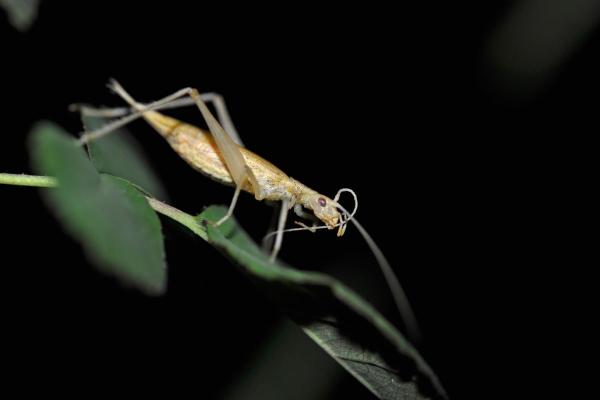
Other types of crickets
Within the Gryllidae family, we can also include the subfamilies Gryllomorphinae and Podoscirtinae. The former is distributed between North Africa and the Palearctic, while the latter in Asia, Africa, Australia and Pacific islands.
At this point we must also mention other insects that are not grouped in the true cricket family, but that are commonly named this way, and that were even grouped with the other types of crickets at some point:
- Mole crickets (family Gryllotalpidae): they have fossorial (underground) habits and measure 3 to 5 cm. The forelimbs are adapted for digging, but they can fly. Males emit loud sounds that they always produce underground. Some examples of this cricket species are the tawny mole cricket (Neoscapteriscus vicinus), the European mole cricket (Gryllotalpa gryllotalpa) and the African mole cricket (Gryllotalpa Africana). Learn more about animals living underground with our article on different types of animals with fossorial habits.
- Ant crickets (family Myrmecophilidae): these are also known as ant-loving crickets. They are tiny, making them similar to cockroach nymphs. They have black, yellow or brown coloring. They lack wings, do not produce sounds and have parasitic habits of ants. Two of the best known species are Myrmecophilus acervorum and Myrmecophilus americanus.
Learn more about a related insect species to crickets with our articles on how long do grasshoppers live and do grasshoppers bite?

If you want to read similar articles to Different Types of Crickets, we recommend you visit our Facts about the animal kingdom category.
- Aguirre, A., & Barranco, P. (2015). Order Orthoptera. Retrieved from: http://sea-entomologia.org/IDE@/revista_46.pdf
- Orthoptera Species File. (2024). Retrieved from: http://orthoptera.archive.speciesfile.org/Common/entry/Login.aspx?Logo=1
- ITIS. (2024). Grylidae. Retrieved from: https://www.itis.gov/servlet/SingleRpt/SingleRpt?search_topic=TSN&search_value=102281#null
- Alexander, R. D., & Otte, D. (2009). In Encyclopedia of Insects (Second Edition).

